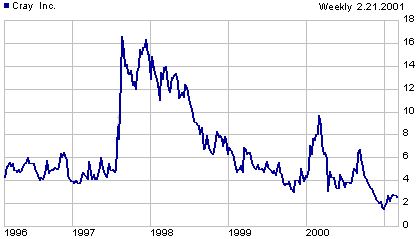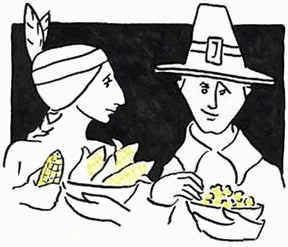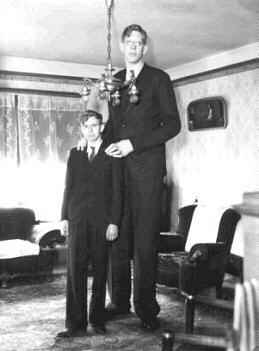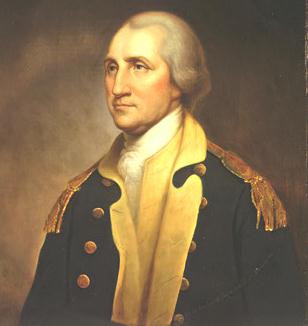|
|
|
| <<
Feb 21| HISTORY
“4” “2”DAY |Feb
23 >> Events, deaths, births, of FEB 22 [For Feb 22 Julian go to Gregorian date (leap years one day earlier) 1583~1699: Mar 04 — 1700s: Mar 05 — 1800s: Mar 06 — 1900~2099: Mar 07] |
On a February
22:
|
2000 La policía española detiene a siete personas en Barcelona y Tarragona por su relación con las actividades presuntamente ilícitas de la asociación Energía Universal y Humana, una de las "sectas prohibidas y peligrosas de la Unión Europea". 1999 Unos 40'000 agricultores protestan en Bruselas por la reducción de ayudas tras la reforma de la Política Agrícola Común. |
| Saddam
Husein, por el que se paraliza un posible ataque norteamericano. 1998 El presidente colombiano Ernesto Samper, Ernesto realiza una sorprendente oferta de dimisión para mejorar las relaciones de su país con Estados Unidos. 1998 Los ministros de Finanzas y de Trabajo de los siete países más industrializados del mundo y Rusia (G-8) aprueban el Londres un plan de acción para impulsar la creación de empleo. 1996 Russia and the head of the International Monetary Fund reached a deal for a loan of more than $10 billion dollars to back up free-market reforms. |
^
 1995
Cray introduces a new supercomputer 1995
Cray introduces a new supercomputerCray Research Inc. presents a new supercomputer, three-to-five-times faster than its predecessor. The company, founded by early computer scientist Seymour Cray (who also worked on UNIVAC, one of the first commercial computers) held about two-thirds of the world market for supercomputers costing $5 million or more. Supercomputers were the predecessor of microcomputers and are still used for military and large business purposes. However, the demand for supercomputers rapidly declined at the end of the Cold War. In 1957, Cray co-founded Control Data Corp., where he built the first computer to use radio transistors instead of vacuum tubes. The transistors made the machines more reliable and allowed for the miniaturization of components, which enhanced the performance of desktop computers.In the 1960s, he designed the world's first supercomputer at Control Data, then left in 1972 and co-founded Cray Research Inc.There, he built the Cray-1 and Cray-2 supercomputers, which helped the defense industry create sophisticated weapons systems and the oil industry construct geographic models that predicted mineral deposits.At his third company, Cray Computer Corp., he failed to raise $20 million for operating costs and filed for bankruptcy in March 1995. It closed soon afterward. In August, Cray started a new company called SRC Computers Inc. Cray Inc. (NASD: CRAY), formed from the March 2000 merger of Tera Computer Company and Cray Research, is the global market leader in high-end supercomputers. But, one year later, it is still a gigaflop as far as profits are concerned, just as its predecessor [see stock price charge above]. Cray Inc. is dedicated to helping customers solve the most-demanding, most-crucial computing problems on the planet-designing the cars and trucks we drive, creating new materials and life-saving drugs, predicting severe weather and climate change, analyzing complex data structures, safeguarding national security, and a host of other applications that benefit humanity by advancing the frontiers of science and engineering. Cray Inc. builds upon a rich history that extends back to 1972, when the legendary Seymour Cray, the "father of supercomputing," founded Cray Research. R&D and manufacturing were based in his hometown of Chippewa Falls, Wisconsin; business headquarters were in Minneapolis, Minnesota. The first Cray-1® system was installed at Los Alamos National Laboratory in 1976 for $8.8 million. It boasted a world-record speed of 160 million floating-point operations per second (160 megaflops) and an 8 megabyte (1 million word) main memory. The Cray-1's architecture reflected its designer's penchant for bridging technical hurdles with revolutionary ideas. In order to increase the speed of this system, the Cray-1 had a unique "C" shape which enabled integrated circuits to be closer together. No wire in the system was more than four feet long. To handle the intense heat generated by the computer, Cray developed an innovative refrigeration system using Freon. In order to concentrate his efforts on design, Cray left the CEO position in 1980 and became an independent contractor. As he worked on the follow-on to the Cray-1, another group within the company developed the first multiprocessor supercomputer, the Cray X-MP!", which was introduced in 1982. The Cray-2!" system appeared in 1985, providing a tenfold increase in performance over the Cray-1. In 1988, Cray Research introduced the Cray Y-MP®, the world's first supercomputer to sustain over 1 gigaflop on many applications. Multiple 333 MFLOPS processors powered the system to a record sustained speed of 2.3 gigaflops. Always a visionary, Seymour Cray had been exploring the use of gallium arsenide in creating a semiconductor faster than silicon. However, the costs and complexities of this material made it difficult for the company to support both the Cray 3 and the Cray C90ä development efforts. In 1989, Cray Research spun off the Cray 3 project into a separate company, Cray Computer Corporation, headed by Seymour Cray and based in Colorado Springs, Colorado. Seymour Cray died of injuries suffered in an auto accident in September, 1996 at the age of 71. The 1990s brought a number of transforming events to Cray Research. The company continued its leadership in providing the most powerful supercomputers for production applications. The Cray C90!" featured a new central processor with industry-leading sustained performance of 1 gigaflop. Using 16 of these powerful processors and 256 million words of central memory, the system boasted unrivaled total performance. The company also produced its first "minisupercomputer," the Cray XMS system, followed by the Cray Y-MP EL series and the subsequent Cray J90!". In 1993, Cray Research offered its first massively parallel processing (MPP) system, the Cray T3D!" supercomputer, and quickly captured MPP market leadership from early MPP companies such as Thinking Machines and MasPar. The Cray T3D proved to be exceptionally robust, reliable, sharable and easy-to-administer, compared with competing MPP systems. Since its debut in 1995, the successor Cray T3E!" supercomputer has been the world's best selling MPP system. The Cray T3E-1200E system has the distinction of being the only supercomputer to ever sustain one teraflop (1 trillion calculations per second) on a real-world application. In November 1998, a joint scientific team from Oak Ridge National Laboratory, the National Energy Research Scientific Computing Center (NERSC), Pittsburgh Supercomputing Center and the University of Bristol (UK) ran a magnetism application at a sustained speed of 1.02 teraflops. In another technological landmark, the Cray T90!" became the world's first wireless supercomputer when it was unveiled in 1994. Also introduced that year, the Cray J90 series has since become the world's most popular supercomputer, with over 400 systems sold. Cray Research merged with SGI (Silicon Graphics, Inc.) in February 1996. In August 1999, SGI created a separate Cray Research business unit to focus exclusively on the unique requirements of high-end supercomputing customers. Assets of this business unit were sold to Tera Computer Company in March 2000. |
| 1995 The Computer Emergency Response Team (CERT), a
federally funded center at Carnegie Melon University, warned the public
that a security flaw could let hackers penetrate UNIX machines through the
Web and read, write, or destroy nearly any file in the system. 1995 Steve Fossett completes first balloon crossing of Pacific Ocean (9600 km) 1995 El Senado español aprueba los Estatutos de Autonomía de Ceuta y Melilla, con lo que queda cerrado el mapa autonómico (pero no menciona el islote Perejil, lo que resultará en una confrontación con Marruecos en julio 2002). 1994 El Sínodo de la Iglesia anglicana aprueba los nuevos cánones para la ordenación de mujeres.
1991 Bush and US Gulf War allies give Iraq 24 hours to begin Kuwait withdrawal. — EE.UU. da a Irak un ultimátum para que se retire de Kuwait, bajo la amenaza de una ofensiva inmediata. 1987 Entra en vigor en Argentina la Ley del Punto Final, con lo que se pone fin a las denuncias contra los militares de la dictadura. 1983 Finaliza en Argel la reunión del Consejo Nacional Palestino, con la reelección de Yasir Arafat como presidente de la OLP. 1980 Afghanistan declares martial law. 1979 St Lucia gains independence from Britain. 1974 Ethiopian police shoot at demonstrators. 1973 US and Communist China agree to establish liaison offices in Beijing and Washington DC. 1972 President Nixon, meets with Chinese Premier Chou En-Lai in Beijing 1972 Khalifa bin Hamad Al Thani becomes Amir and Prime Minister of Qatar 1971 Lieutenant General Hafiz al-Assad becomes President of Syria. 1969 Huelga en España de 25'000 mineros asturianos. |
1965 Made cardinals: Josyf Ivanovycè Slipyj [17 Feb 1892 – 07 Sep 1984], Giulio Bevilacqua [14 Nov 1881 – 06 May 1965, Federico Vignale [15 Dec 1890 – 10 Aug 1971]
1958 Indonesian air force bombs Padang, Sumatra/Menado, Celebes. 1958 Egypt and Syria form United Arab Republic (UAR)
|
| 1945 British troops take Ramree Island, Burma. 1945 Canadian 3rd Division occupies Moyland
1941 German assault on El Agheila Libya 1941 I. G. Farben decides building Buna-Werke in Auschwitz Concentration Camp 1940 Finnish troops vacate Koivisto island 1940 German air force sinks 2 German destroyers, killing 578 1939 Netherlands recognizes Franco-regime in Spain. 1938 Alemania e Italia aceptan la propuesta británica sobre la retirada de voluntarios en la Guerra Civil española. Teruel, reconquistada por las fuerzas "nacionales". 1932 Adolf Hitler, candidato a la presidencia de la República alemana por el Partido Nacionalsocialista. 1925 La Asamblea Nacional francesa vota la supresión de embajada en El Vaticano.
1921 Se crea en la URSS el Gosplán, para duplicar la producción industrial. |
1918 Germany claims Baltic states, Finland and Ukraine
from Russia.
|
| 1917 Los socialdemócratas, liberales de izquierda y
nacional liberales exigen en el Reichstag que se adopte el sistema de Gobiernos
parlamentarios. 1916 I Guerra Mundial: Las fuerzas rusas se baten en retirada en la región de los lagos Masurianos ante la ofensiva alemana del general Hindenburg. 1916 Alemania declara la guerra submarina total en aguas británicas, en respuesta a las medidas de bloqueo del Reino Unido. 1915 Germany begins "unrestricted" submarine war. 1909 Great White Fleet, first US fleet to circle the globe, returns to Virginia 1907 first cabs with taxi meters begin operating in London 1903 Due to drought the US side of Niagara Falls runs short of water 1900 Battle at Wynne's Hill, South-Africa (Boers vs British army) 1900 Hawaii became a US territory 1889 President Cleveland signs bill to admit Dakotas, Montana and Washington state to the Union. 1887 Union Labor Party organized in Cincinnati 1879 first 5¢ and 10¢ store opened by Frank W Woolworth in Utica NY 1878 Greenback Labor Party formed (Toledo OH) 1872 first national convention of the Prohibition Party (Columbus OH) 1872 Labor Reform Party formed at Columbus OH 1865 Tennessee adopts a new constitution abolishing slavery 1865 Battle of Wilmington NC (Fort Anderson) occupied by Federals. 1865 Wilmington, North Carolina, is captured by Union forces. 1865 Joseph E. Johnston is placed in command of Confederate forces trying to oppose Sherman's march through the Carolinas. 1864 Battle of Okolona, Mississippi, ends on its 2nd day. 1864 Battle at Dalton, Georgia 1864 Skirmish at Calfkiller Creek (Sparta) Tennessee 1862 Jefferson Davis is inaugurated as President of the Confederate States of America
1854 first meeting of the Republican Party, Michigan. |
1828 Russia and Persia sign Peace of Turkmantsjai 1825 Russia and Britain establish Alaska-Canada boundary
1784 First US ship to trade with China, Empress of China, sails from New York. 1775 Jews expelled from outskirts of Warsaw Poland 1775 First US joint stock company (to make cloth) offers shares at £10 1746 French troops conquer Brussels  1744
Battle at Toulon English-French and Spanish fleet. 1744
Battle at Toulon English-French and Spanish fleet.1689 Guillermo de Orange y María Estuardo aceptan el ofrecimiento del trono inglés. 1630 Contrary to pop culture, Amerindian Quadequina, brother of Wampanoag chief Massasoit, did not introduce the Pilgrims (English colonists in America) to popcorn, at their first Thanksgiving dinner. This poppycock originated from this passage of the 1889 novel Standish of Standish by Jane Goodwin Austin [25 Feb 1831 – 30 Mar 1894]: [Quadequina’s attendant pours onto a table] “something like a bushel of popped corn, a dainty hitherto unseen and unknown by most of the Pilgrims. All tasted, and John Howland, hastily gathering up a portion upon a wooden plate, carried it up to the Common house for the delectation of the women, that is to say, for Elizabeth Tilley, whose firm young teeth craunched it with much gusto.” Actually the only historic description of the first Thanksgiving (fall of 1621) comes from Mourt’s Relation (1622), in which there is no mention of popcorn. 1530 Carlos I de España y V de Alemania es coronado emperador en Roma por el Papa. 1495 French King Charles VIII enters Naples to claim the crown 1349 Jews are expelled from Zurich Switzerland 1300 Pope Boniface VIII delegates degree 1288 Girolamo Masci elected Pope Nicolas IV 1281 Simon de Brion elected Pope Martin IV 1198 Pope Innocent III, who would make the strongest claims for the papacy of the Middle Ages, is consecrated. Under his pontificate the Church affirmed that the Eucharist is Christ's body and blood. 1076 Pope Gregory (Hildebrand) excommunicates all who attended the Diet of Worms which "deposed" him at Emperor Henry II's instigation. 0896 Pope Formosus crowns as emperor king Arnulf of Karinthie/French, who had just conquerered Rome. 0506 Alarico II, rey visigodo, promulga la Lex Romana Visigothorum o Breviario de Alarico II, que resumía toda la legislación aplicable a sus súbditos hispanorromanos y galorromanos. 0057 -BC- Origin of Vikrama Samvat Era (India) |
| Deaths
which occurred on a February 22: ^top^ 2003 Sami Halawi, 42, and Walid el-Masri, 22, Palestinians, shot in the casbah of Nablus, West Bank, by Israeli soldiers. Halawi is shot at the entrance to his home, the Israelis say that he left his home during a curfew and was holding a large suspicious object. El-Masri is shot in the head during clashes between Palestinians and Israeli soldiers (none of which is hurt) who say that he threw a firebomb at them from the roof of a home. The Reuters body count of the al-Aqsa intifada is now “at least“ 1862 Palestinians and 705 Israelis. 2002 Gordon Matthews, 65, of complications of a 20 Feb stroke, inventor of voice mail, founding a company that would become VMX Inc. (“Voice Message Express”). In the 1980's the equipment, which might fill part of a room, would cost $180'000 for 20 hours of recording capacity, down to $13'000 by 1992. 2002 Valerie Achmir, 56, Israeli from Beit Shemesh, shot from a passing car as he was driving alone on the West Bank road between Atarot and Givat Ze'ev, north of Jerusalem, in the direction of Givat Ze'ev. 2002 Mohammed Tawfiq Shamali, 24, Palestinian from the village of Douha, next to Bethlehem, West Bank, shot by an armed shopper after Shamali set off a small explosion but failed to fully detonate his explosive belt, in a supermarket in the Jewish enclave settlement of Efrat, where Shamali was a construction worker who had a permit to reside inside Israel. 2002 Jonas Malheiro Savimbi, at 15:00, in a fight with Angolan government forces, in Moxico province. Born on 03 August 1934, Savimbi founded in 1966 the independentist organization UNITA (União Nacional para a Independência Total de Angola), which, supported by the US and apartheid South Africa, had fought for independence along with rival rebel groups including the Soviet-backed Marxist MPLA (Movimento Popular para a Libertação de Angola) which took power after Portugal granted independence on 15 January 1975, and which UNITA kept fighting. A 01 May 1991 peace accord between the MPLA government and UNITA was broken after UNITA refused to accept the results of September 1992 elections. A 20 November 1994 peace treaty did not hold either. 1998 José María Areilza y Martínez Rodas, político español. 1995 At least 99 prison rioters, killed by Algiers police. 1987 Andy Warhol, in a New York City hospital, US Pop artist born on 06 August 1928. Author of The Philosophy of Andy Warhol (1975), Portraits of the Seventies (1979), Andy Warhol's Exposures (1979). — MORE ON WARHOL AT ART “4” FEBRUARY — LINKS — Self-Portrait — Liz — Campbell's Tomato Soup — Campbell's Tomato Soup (from a banner) — The Velvet Underground and Nico (a banana) — Kimiko Powers 1971-1972 — Flowers — Sandro-Bottic — Beethoven 1985 Salvador Espriu i Castello, escritor catalán. 1984 Newman, mathematician. 1983 Some 3000 Moslems killed by Hindus, in Assam. 1982 René Jules Dubos, ecologista y bacteriólogo francés. 1980 Oskar Kokoschka, Austrian Expressionist painter born on 01 March 1886. — MORE ON KOKOSCHKA AT ART “4” FEBRUARY — LINKS — Self-Portrait — Ezra Pound — Bride of the Wind 1975 Perron, mathematician. 1973: 106 persons, as Israeli fighter planes shoot down a Libyan commercial airliner. 1973 Winthrop Rockefeller, 60, US Governor (Arkansas) 1958 Mathurin Méheut, French artist born in 1882. 1948 Some 50 persons in Arab terrorist bomb attack in Jerusalem. 1944 More than 800 persons bombed by mistake in Enschede, Arnhem and Nijmegen, by US 8th Air Force.
1933 Some 50 persons shot by SA/SS-police, as Göring forms it. 1913 Ferdinand Mongin de Saussure, 55, Swiss linguist. 1913 Francisco Indalecio Madero, 39, Mexican President, assassinated in military coup led by Victoriano Huerta. 1906 Adrien Moreau, French artist born on 18 April 1843. 1898 Black postmaster lynched, his wife and 3 daughters shot in Lake City SC 1832 Johann Wolfgang von Goethe poet, Weimar, Germany. 1827 Charles Wilson Peale, US painter born on 15 April 1741. He had 17 children including Raphaelle Peale, Rembrandt Peale, Titian Peale, Rubens Peale. James Peale was his younger brother, Charles Peale Polk was his nephew. — MORE ON PEALE AT ART “4” FEBRUARY — LINKS — Self-Portrait — The Peale Family — Raphaelle Peale — The Staircase Group (Raphaelle Peale and Titian Ramsey Peale) — The Artist in His Museum — Washington at the Battle of Princeton January 3, 1777 — Washington and His Generals at Yorktown — Mordecai Gist — Disinterment of the Mastodon 1823 Jacques Albert Senave, Belgian artist born on 12 September 1758. 1810 Charles Brockden Brown, "Godwin", escritor estadounidense. 1792 Nicolas-Guy Brenet, French painter born on 30 June 1728. — LINKS 1750 Pietro Filippo Scarlatti, 71, composer. 1687 Jean-Baptiste Lully Paris, composer. 1681 Leendert van Cooghen, Dutch artist born in 1610 or 1632 [!!!] 1677 Karel van der Pluym, Dutch artist born in 1625. 1512 Amerigo Vespucci, 61, Italian explorer (America) 1371 David II Bruce, 46, king of Scotland (1331-71). 1076 Godfried III with the Hump, duke of Lower Lorraine, murdered 0606 Pope Sabinian (604-606) |
 Births
which occurred on a February 22: Births
which occurred on a February 22: 1945 Arab League forms (Cairo). 1934 Blasco Peñaherrera Padilla, político, abogado y periodista ecuatoriano. 1932 Edward Kennedy (MA Democrat: US Senator; brother of 35th US President John F. Kennedy and US Attorney General Robert Kennedy; drown-and-run driver at Chappaquidick) 1918 Robert Pershing Wadlow, in Alton, Illinois, weight 3.8.kg. At 18 months he weighed 30 kg. At age 2, he had a double hernia operation which may be the reason why he never stopped growing fast. By age 5 he was 1m63 tall and weighed 48 kg. On his 8th birthday, he weighed 77 kg and was 1m83 tall. At 13 he was 2m13 tall, and 2m44 at age 17. [1936 photo with brother >] On 27 June 1940 Wadlow’s height was 2m72. A week later, he was fitted with a brace on his right leg. The brace fit poorly and inflamed his ankle, causing cellulitis. Robert Wadlow died from the infection on 15 July 1940. A coffin was made especially for him: 3m28 long, 81 cm wide, 76 cm deep. He weighed a 199 kg, wore shoes size 37AA, and a size-25 ring, his hands measured 32cm from the wrist to the tip of the middle finger. His arm span was 2m89. 1915 Pedro Mozos, pintor español. 1914 Renato Dulbecco, virólogo estadounidense de origen italiano, Premio Nobel de Medicina 1975. 1908 Rómulo Betancourt President of Venezuela (1945-48, 1958-64) 1904 Peter Hurd, US Contemporary Realist painter, printmaker and illustrator who died on 09 July 1984. — LINKS — A Ranch on the Plains. 1903 César González Ruano, escritor y periodista español. 1903 Frank Ramsey, mathematician. 1900 Sean O'Faolain, Irish short-story writer and teacher who died on 20 April 1991. 1895 Víctor Raúl Haya de la Torre founder (Peruvian Aprista Party) |
1892 José Antonio Montalvo Berbeo, político colombiano.
1883 (or 23 Feb) Guy Carleton Wiggins, US Impressionist painter who died in 1962. — MORE ON WIGGINS AT ART “4” FEBRUARY — LINKS — Wall Street Winter — Winter at the Library — Washington Square Winter — NY Public Library Winter — Midtown Fifth Avenue Winter — Entrance to Central Park Winter
1865 Otto Modersohn, German artist who died in 1943. 1864 Jules Renard France, writer (Poil de Carotte). 1863 Pedro Morales Pino, músico y pintor colombiano. 1857 Heinrich Hertz, radio pioneer, is born German physics professor Heinrich Hertz was the first person to send and receive radio waves. His studies of electromagnetic waves led to a method of measuring the length and velocity of radio waves. The hertz, a unit of frequency measurement, was named for him. 1857 Lord Robert Baden-Powell founder (Boy Scouts, Girl Guides) 1849 Sonin, mathematician. 1846 Giuseppe de Nittis, Italian artist who died on 24 August 1884.  1840
August Bebel, German co-founder
of the Social Democratic Party who died on 13 August 1913. 1840
August Bebel, German co-founder
of the Social Democratic Party who died on 13 August 1913.1838 Pierre Jules Cesar Janssen, discoverer of hydrogen in Sun. 1819 James Russell Lowell, US poet, critic, essayist and diplomat who died on 12 August 1891. 1817 Borchardt, mathematician. 1810 Frédéric-François Chopin Polish / French pianist / composer (more than 200 compositions for solo piano) 1806 Antoine Joseph Wiertz, Belgian painter who died on 18 June 1865. He specialized in Historical Subjects. — MORE ON WIERTZ AT ART “4” FEBRUARY — LINKS —Triptych Christ in the Tomb: left section: Eve experiencing her first guilt after sinning _ right section: The Angel of Evil — The Beautiful Rosine. 1797 William I Berlin, King of Prussia (1861-88)/German Emperor (1871-88) 1796 Adolphe Quetelet, mathematician. 1788 Arthur Schopenhauer Germany, philosopher (Great Pessimist). He died on 21 September 1860. 1778 Rembrandt Peale, US painter and writer. [portrait of George Washington >]. Born on the 46th birthday of George Washington (of whom he would paint many portraits) he was the son of Philadelphia artist and museum proprietor Charles Willson Peale, who died on Rembrandt Peale's 49th birthday. — MORE ON REMBRAND PEALE AT ART “4” FEBRUARY — LINKS — Rubens Peale with a Geranium _ Rubens Peale with Geranium, (1801) — Portrait of Rosalba Peale (1820) — Michael Angelo and Emma Clara Peale (1826) — Falls of Niagara Viewed from the American Side (1831) — George Washington (1814) — Porthole Portrait of George Washington — Gilbert Stuart — Thomas Jefferson 1772 Karl Jacob Wagner composer. 1732 George Washington, at his parents' plantation in the Virginia Colony, truthful cherry tree chopper, slave owner, general, first US President (1789-97). He died on 14 December 1799. — portrait of Washington by Rembrandt Peale. 1715 Charles-Nicolas Cochin the Younger, French draftsman, engraver, and writer, who died in 1790. — LINKS — 12 prints at FAMSF 1649 Bon de Boulogne (or Boullongne), French artist who died on 16 May 1717. 1599 Anthony Van Dyck, Antwerp, Belgium, painter. 1440 Ladislaus V Posthumus, King of Hungary/Bohemia. 1403 Charles VII, king of France (1422-1461), drove out English (with prodding from Jeanne d'Arc). He died on 22 July 1461. |